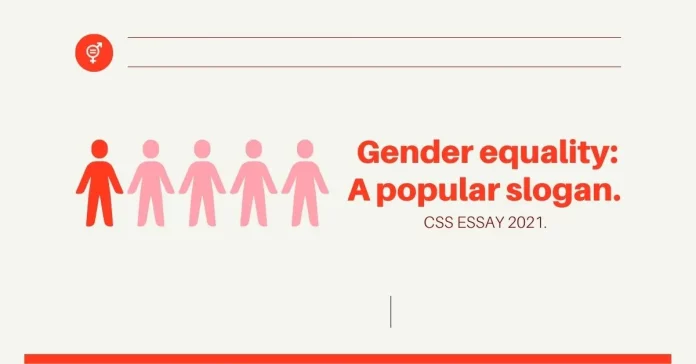Table of Contents
Thesis statement
While gender equality is a popular slogan, its achievement requires addressing deep-rooted societal norms, systemic barriers, and cultural biases.
Introduction
Gender equality has been a rallying cry for social justice movements around the world. It is a concept that resonates with people across cultures and generations, representing a vision of a fair and equitable society. However, the achievement of gender equality is far from simple. It requires addressing deep-rooted societal norms, systemic barriers, and cultural biases that perpetuate gender disparities. In this essay we explore the complexities of gender equality, highlighting the challenges faced and the importance of its realization.
Exposition: Understanding Gender Equality
Gender equality refers to the equal rights, opportunities, and treatment of individuals, regardless of their gender identity. It encompasses the goal of eradicating gender-based discrimination and creating a society where everyone has equal access to resources, power, and decision-making. While the concept of gender equality has gained traction in recent decades, progress has been uneven across regions and sectors.
Description: Gender Disparities and Inequality
To comprehend the significance of gender equality, it is essential to recognize the existing gender disparities and inequalities that persist in various domains.
The gender pay gap remains a prominent issue globally. Statistics reveal that women, on average, earn less than their male counterparts for comparable work. Factors such as occupational segregation, stereotypes, and limited access to higher-paying positions contribute to this gap.
Moreover, women continue to be underrepresented in leadership roles in both the public and private sectors. Structural barriers, biased promotion practices, and lack of representation perpetuate gender disparities in decision-making processes and impede progress toward equality.
Gender-based violence and discrimination pose additional challenges. Women and girls disproportionately face various forms of violence, including domestic violence, sexual assault, and harassment. Discriminatory practices in education, employment, and healthcare limit their opportunities and hinder their full participation in society.
Argumentation: Factors Hindering Gender Equality
The achievement of gender equality is hindered by several factors deeply ingrained in society.
Societal norms and cultural biases perpetuate gender stereotypes and reinforce traditional gender roles. These norms and biases shape expectations and social pressures that limit individual choices and opportunities. The perception that certain professions or roles are better suited for one gender over another creates barriers and restricts career options.
Systemic barriers and institutionalized discrimination also contribute to gender inequality. The absence of policies that support work-life balance, such as affordable childcare and parental leave, disproportionately affects women’s career progression. Biased hiring and promotion practices based on gender further exacerbate disparities and hinder equal opportunities.
Furthermore, limited access to education and healthcare continues to impede gender equality. Gender gaps in education, particularly in developing countries, deny girls the opportunity to develop their full potential. Inadequate healthcare services and cultural taboos surrounding women’s health issues further restrict their well-being and overall empowerment.
Argumentation: The Importance of Gender Equality
Gender equality is not merely a slogan; it is essential for social, economic, and cultural progress.
From an economic standpoint, closing the gender pay gap and promoting gender equality in the workforce contribute to economic growth and development. When women have equal access to employment opportunities, the talent pool expands, driving innovation and productivity. Furthermore, diverse and inclusive workplaces foster creativity, problem-solving, and better decision-making.
Beyond economic benefits, gender equality is crucial for social justice and human rights. It challenges harmful gender norms and stereotypes, promoting a more inclusive and tolerant society. By ensuring equal rights and opportunities for all individuals, regardless of their gender, we create a more just and equitable world.
Narration: Progress and Promising Initiatives
While challenges persist, there have been significant strides toward gender equality. Legislative reforms and policy changes have played a crucial role in advancing gender equality. Examples include the introduction of laws to combat gender-based violence, promote pay equity, and establish quotas for women’s representation in political and corporate spheres. International agreements, such as the United Nations Sustainable Development Goals and the Convention on the Elimination of All Forms of Discrimination against Women, provide a framework for action and accountability.
Grassroots movements and advocacy have also been instrumental in driving change. Campaigns like the #MeToo movement and global initiatives for women’s rights have shed light on gender-based violence, sparked conversations, and mobilized communities. These movements have raised awareness, challenged societal norms, and pushed for policy reforms, fostering a more inclusive and equal society.
Conclusion
Gender equality remains an ongoing struggle that requires collective efforts. While it may be a popular slogan, achieving true gender equality demands addressing deep-rooted societal norms, systemic barriers, and cultural biases. By acknowledging the persistent gender disparities, advocating for policy changes, challenging stereotypes, and promoting inclusive practices, we can pave the way for a more equitable and just future. Let us work together to turn the slogan of gender equality into a lived reality for all individuals, regardless of their gender identity.


